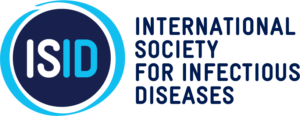Though women now make up more than half of medical school and other biomedical graduates in many countries, leadership roles in biomedical institutions are still overwhelmingly male. In most European countries, fewer than 20% of biomedical professors are women.
“You can see the pipeline leaking before your eyes,” says Angela Huttner, an infectious disease physician based in Geneva, Switzerland, and a member of the European Society for Clinical Microbiology and Infectious Diseases (ESCMID). “There are many women who, if they reduce their work presence even temporarily for childrearing, come back to find the doors to an academic or other leadership track closed—although they may be welcome to stay on and work indefinitely in ancillary positions.” Dr. Huttner notes an important fact: “When these women come back in full, their CVs really are likely to be thinner than those of men who never left. They are likely to have clocked fewer research projects and other collaborations. There may not be enough time for them to build up their CVs to compete for those early-career awards that tend to define the next generation’s leaders.”
There may not be enough time because many medical societies impose a fixed age limit, usually 40 years, on eligibility for career-development and other ‘junior-investigator’ awards. “Because professional women tend to start having children later, they may actually age out of eligibility before they have even come back full-time,” observes Dr. Cynthia Sears, past president of the Infectious Disease Society of America.
Those age limits were not meant to harm women; they were meant to protect junior applicants from more experienced, senior competition. “But in reality,” notes Matthew Harvey of the Federation of European Microbiological Societies, “these age limits function as a glass ceiling for anyone who takes a career break for family or other duties.”
Members of ESCMID, the Federation of European Microbiological Societies (FEMS), the Infectious Disease Society of America (IDSA), the International Society for Infectious Diseases (ISID), and the Swiss Society of Infectious Diseases (SSI) have thus teamed up to address the issue. They have released a joint position paper with recommendations on how to deal fairly with career breaks, whether full-time or just reduced workload, when assessing eligibility for these early-career awards.
First, the societies recommend that eligibility criteria apply a ‘professional age limit’, not a physiological age limit. Second, societies should state clearly in the award announcement that career breaks will be factored into applicants' evaluations, and that ‘time absent is time extended’. In other words, for every full-time equivalent of career break taken, the same full- time equivalent will be extended to the professional age limit. Further, opportunity costs mustalso be taken into account. “People who take career breaks sometimes see their work under-documented,” explains Dr. Britta Lassman of ISID. “If they leave before a project’s manuscript is finalized, their names may not make it onto that publication.”
Finally, societies should implement systems to collect and analyze applicant and awardee demographic data, including gender. “Tracking the data over time will allow us to check on our award programs and their reach,” says Dr. Talia Swartz of IDSA. “And it’s good for everyone. A more inclusive approach will ensure high-quality proposals regardless of age or career interruptions.”
The group expects that it will take time to reap the benefits of this “little tweak in the infrastructure”, but they are optimistic. “We have to keep looking for the little defects in the scaffolding that’s been built around us—defects that were not necessarily meant to do harm,” says Dr. Nicolas Mueller of the Swiss Infectious Disease Society. “Sometimes they’re obvious, and sometimes they’re more hidden. But every little one counts.”
